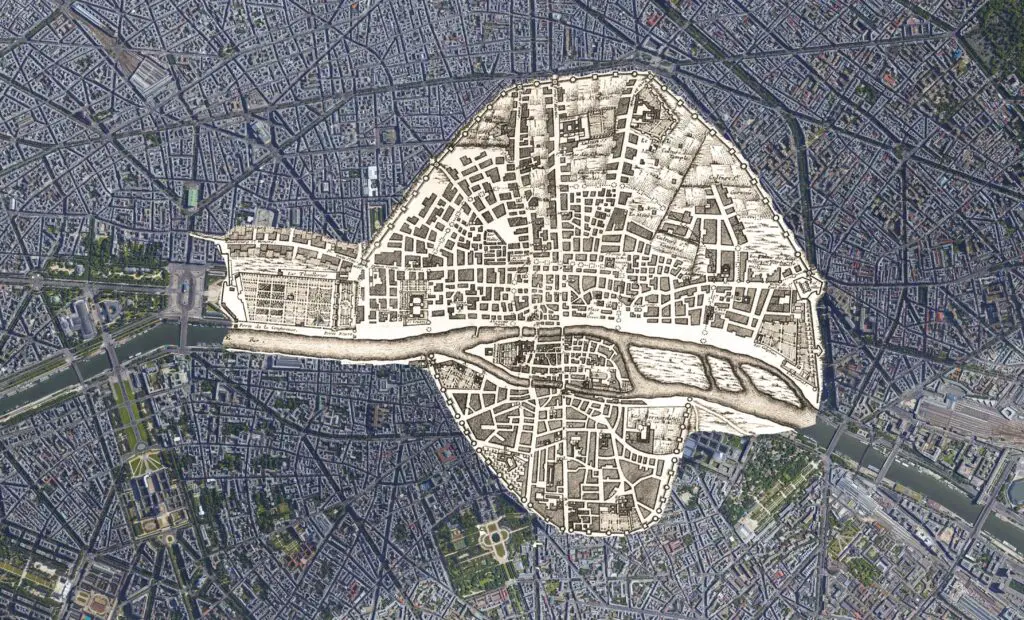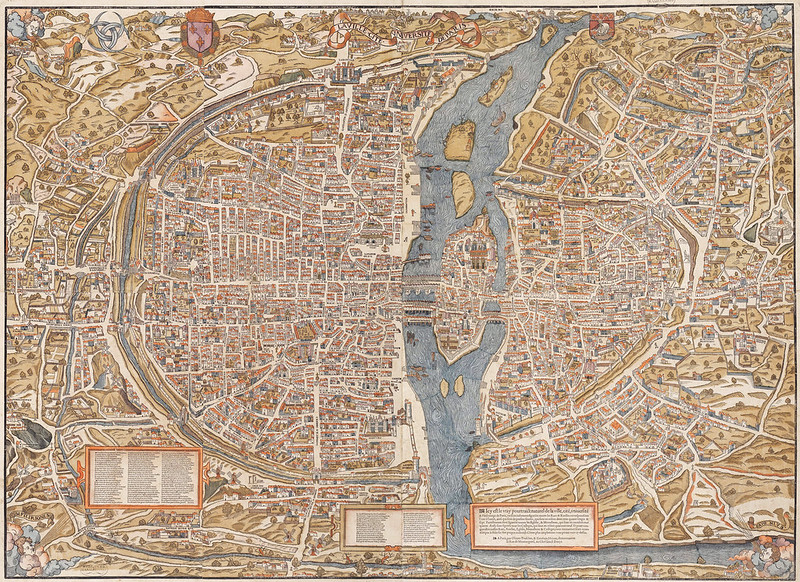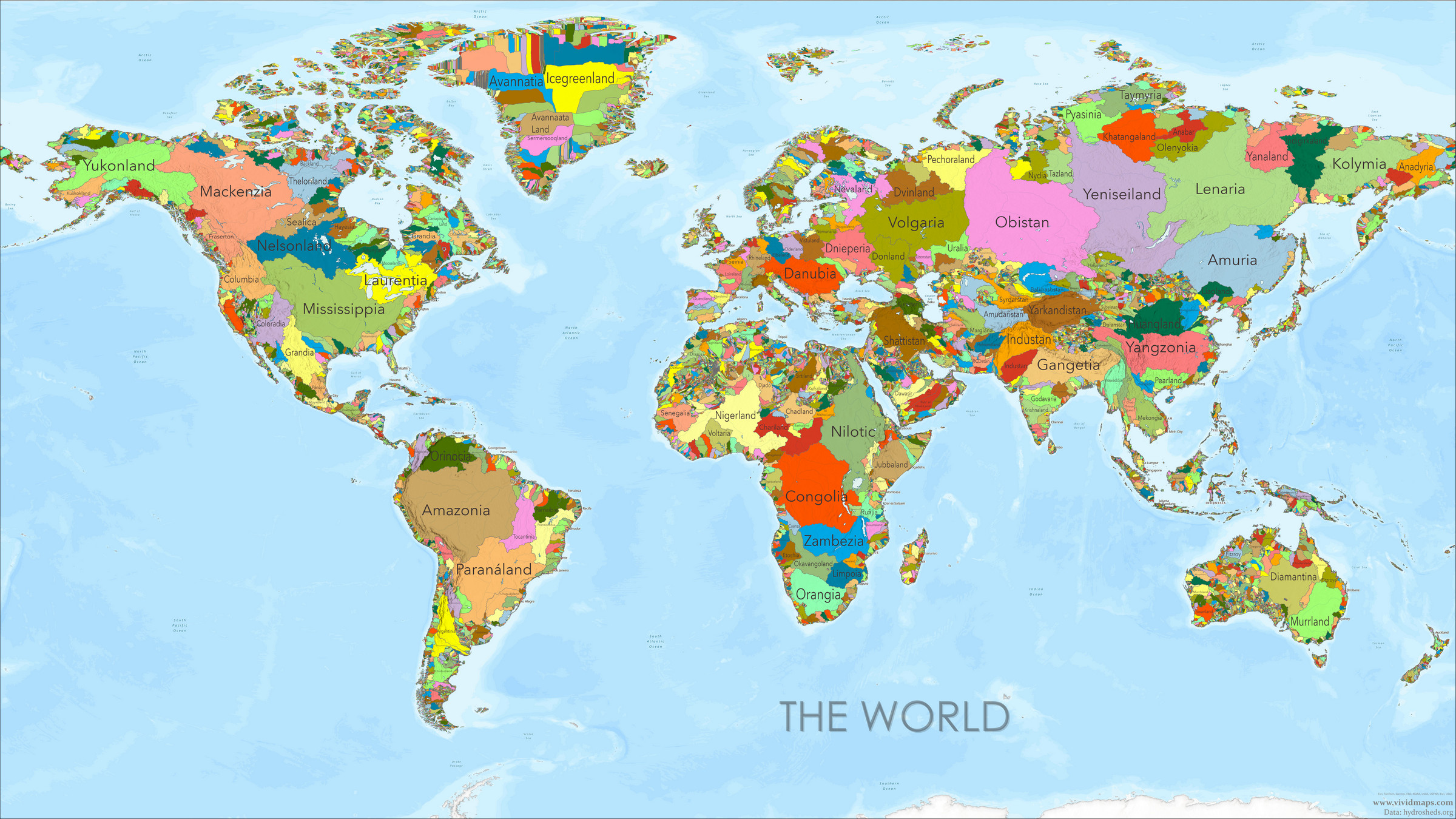Medieval maps of Paris
In the tenth century, Paris was a provincial town of weak political and economic importance. Still, under the kings of the Capetian dynasty who ruled France until 14 century, it becomes a significant, commercial, political, and religious center.
Most of the city was on the contemporary Seine river’s left bank, where stood the essential part of the Roman period city. Famous monasteries and leading universities were built in the Left Bank of the city.
The right bank also began to develop as a significant urban area relatively early and was already very important in the 12th century. The Right Bank, where the ports, markets, artisans, and tradespeople were settled, became the commercial center of Paris.
With 80 thousand residents, Paris became in the 13th century the most populous city in Christian Europe. But, the 14th century brought darker times – the population of Paris was decreased by famine between 1315 and 1317 and by plague in 1349.
Around the 14th or 15th century, the population reached almost 250 thousand residents, making it the most populated city in all of Europe.
1422 map of Paris on top of today Paris

Overhead map from a 3D reconstruction of medieval Paris

The map above is based on the map of Paris by Truschet and Hoyau, published in 1553.

10 most interesting facts about medieval Paris
- Notre-Dame Cathedral: Construction of the famous Notre-Dame Cathedral began in 1163 and was completed in 1345. It stands as one of the most iconic Gothic cathedrals in the world and was a central landmark in medieval Paris.
- City Walls: Paris was surrounded by fortified walls during the medieval period. The city expanded over time, and successive walls were built to accommodate the growing population. These walls played a crucial role in defense and protection.
- The University of Paris: The University of Paris, often referred to as the Sorbonne, was founded in the 12th century and became one of Europe’s leading centers for intellectual and academic pursuits. It attracted scholars from across Europe and contributed to the city’s cultural and intellectual vibrancy.
- Île de la Cité: The Île de la Cité, an island in the Seine River, is the historical heart of Paris. It was the site of the original settlement that eventually became the city of Paris. During the medieval period, it was densely populated and housed important structures like Notre-Dame Cathedral.
- The Louvre: The Louvre, now renowned as one of the world’s largest art museums, originated as a fortress during medieval times. It was initially built as a defensive structure in the 12th century and later evolved into a royal palace.
- Sainte-Chapelle: Built between 1242 and 1248, Sainte-Chapelle is a stunning Gothic chapel on the Île de la Cité. It was commissioned by King Louis IX (Saint Louis) to house significant Christian relics, including the Crown of Thorns. Its stained glass windows are considered masterpieces of medieval art.
- Châtelet and Conciergerie: The Châtelet was a fortress and prison complex located on the right bank of the Seine. It served as a symbol of royal authority and played a role in maintaining order. The adjacent Conciergerie was a notorious prison where prisoners, including Marie Antoinette, were held during the French Revolution.
- Medieval Streets: The layout of medieval Paris was characterized by narrow, winding streets and densely packed buildings. Many of these streets still exist today in the city’s historic neighborhoods, such as the Marais.
- Markets and Trade: Medieval Paris was a bustling center of trade and commerce. The city had various markets, including the Marché aux Fleurs (Flower Market) and the Marché des Innocents. These markets were essential hubs for economic activities and contributed to the city’s prosperity.
- Guilds and Crafts: Guilds played a significant role in medieval Parisian society. These organizations brought together artisans and craftsmen of similar trades to protect their interests, maintain quality standards, and provide social support.









Growth of Paris from Roman Empire times up untill 1735
